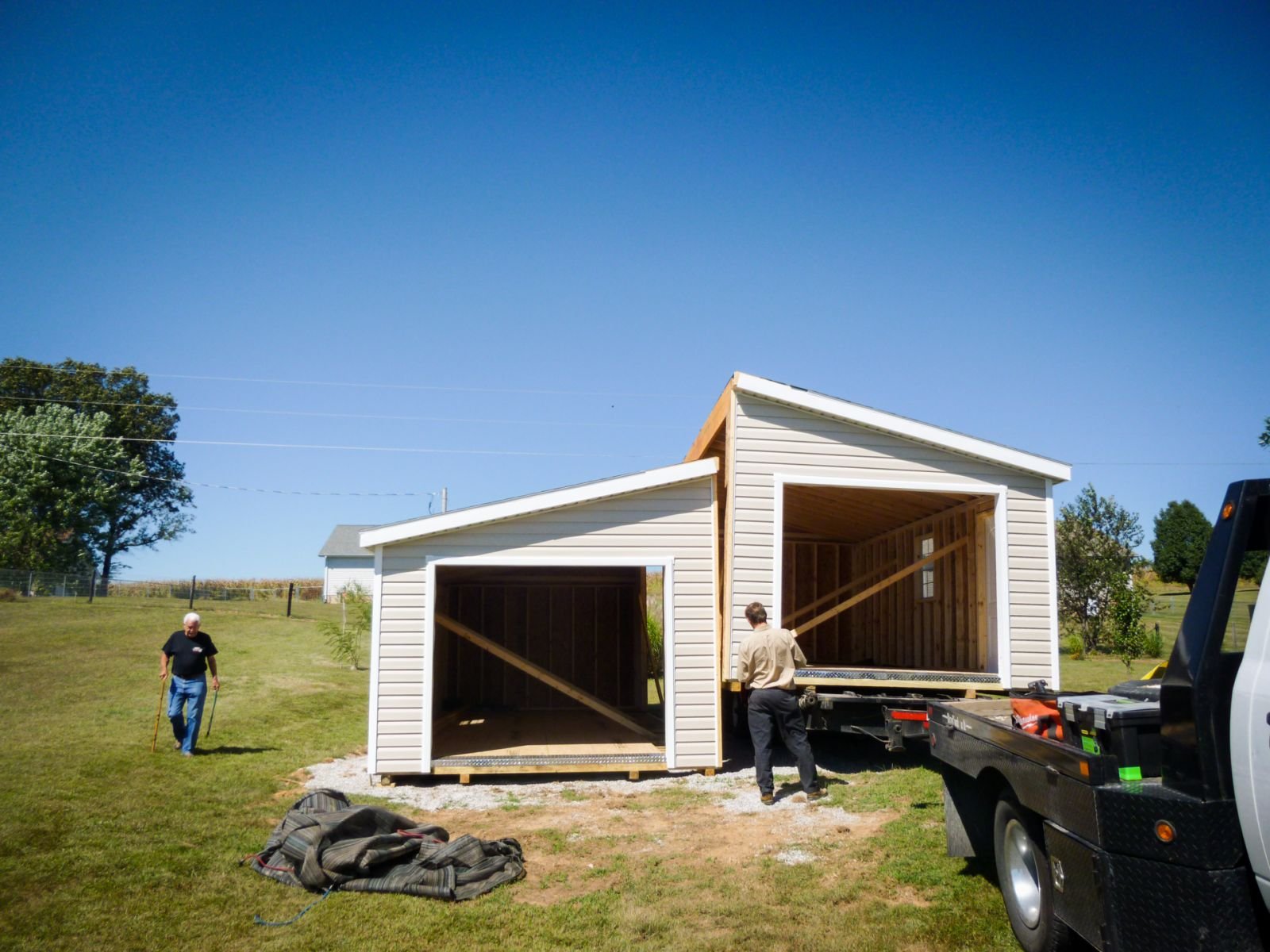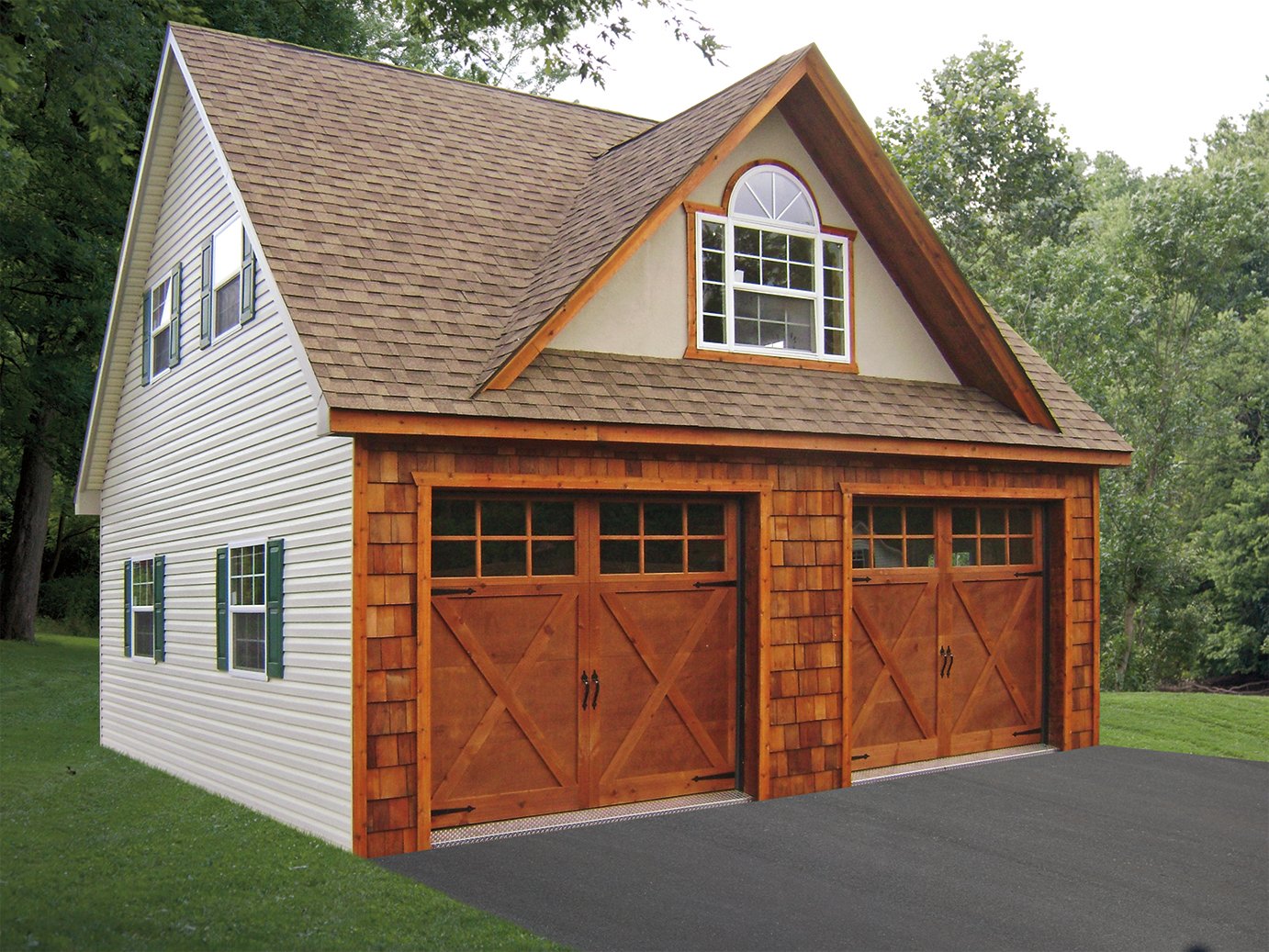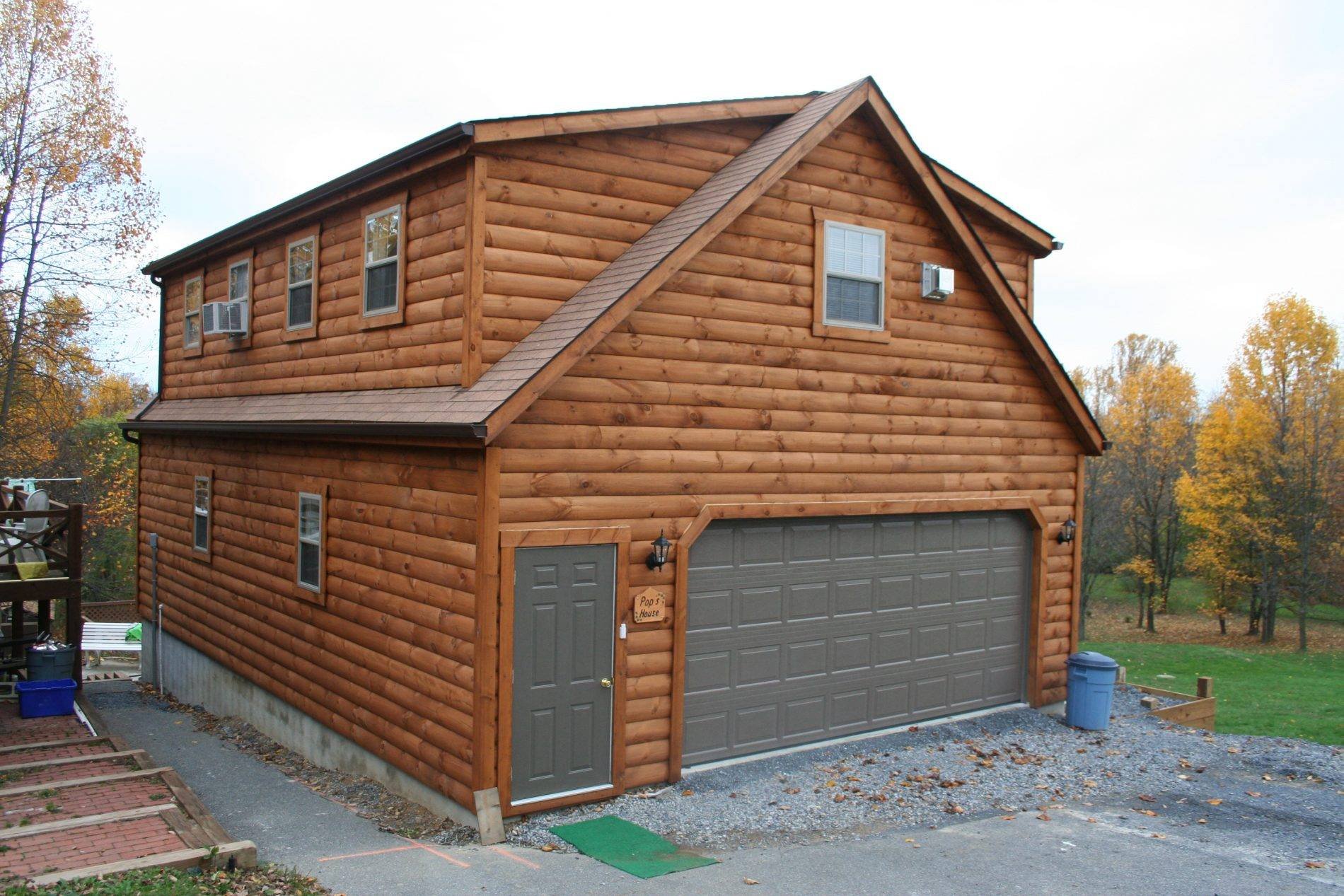If you’re considering expanding your manufactured home with a garage, this comprehensive step-by-step guide will provide you with the essential knowledge and insights to successfully execute your project. From planning and design to construction and completion, we’ll navigate the intricacies of adding a garage to a manufactured home, ensuring structural integrity, code compliance, and aesthetic harmony.
Key Takeaways:
- Pre-attached garages may be available in manufactured home communities.
- Detached garages are a simpler and more cost-effective option.
- Attached garages have higher resale value but are more complex to build.
- Ensure home stability before adding a garage.
- Obtain necessary permits and consult building regulations.
- Attached garages require securing to the home’s frame.
- Detached garages offer flexibility and space.
- Consider resale value when choosing between attached and detached garages.
- Hire a reputable professional for garage construction.
Adding a Garage to a Manufactured Home

Step 1: Consider Your Options
- Pre-Attached Garage: A convenient option, but limited in availability.
- Detached Garage: Provides flexibility and lower costs, but requires separate construction.
- Attached Garage: Enhances home value and offers more convenience, but involves complex construction.
Step 2: Ensure Home Stability
- Consult a professional to assess the home’s structural integrity for adding a garage.
- Ensure the home’s foundation is capable of supporting the additional weight.
Step 3: Obtain Permits and Regulations
- Contact your local building department to secure necessary permits.
- Familiarize yourself with all applicable building codes and regulations.
Step 4: Choose a Construction Type
- Attached Garage: Connect the garage directly to the home’s frame for a seamless transition.
- Detached Garage: Separate the garage from the home, allowing for flexibility in placement.
Step 5: Secure the Garage
- For attached garages, anchor the garage to the home’s frame using bolts or connectors.
- For detached garages, build a separate foundation and ensure proper drainage.
Step 6: Install Utilities
- Run electrical wiring and plumbing lines from the home to the garage.
- Consider installing an HVAC system for heating and cooling.
Step 7: Finish the Garage
- Install drywall, insulation, and flooring to complete the interior.
- Add a roof and exterior siding to match the home’s aesthetic.
Pros and Cons of Adding a Garage to a Manufactured Home
| Pros | Cons |
|---|---|
| Increased storage space | Can be costly to construct |
| Enhanced resale value | May require foundation modifications |
| Convenience and accessibility | May need additional permits |
| Additional workspace or hobby area | Can potentially alter the home’s architectural design |
Would you like to know the 5 bedroom 3 bath mobile home price? Get a free quote and start planning today.
Do you need Aetna home health care? We can match you with a local caregiver who is experienced in your type of care.
Thinking of expanding your space? Get a free quote on adding a modular addition to existing home cost.
Framing and Construction Techniques

Key Takeaways:
– Choose the Right Framing and Construction Techniques:
– Adhere to your local building codes and ensure the garage is tied into the manufactured home’s existing frame.
– Follow HUD Regulations: Ensure the garage addition complies with any applicable regulations set by the Department of Housing and Urban Development (HUD).
– Secure Permits and Inspections:** Obtain necessary permits from local authorities before construction begins and schedule inspections to ensure compliance.
Framing Techniques
Framing a garage addition to a manufactured home requires careful consideration of the existing structure and local building codes.
-
Attached Garages:
- The garage is directly attached to the manufactured home, sharing a common wall. This framing technique offers a seamless transition between the two structures but requires precise alignment and engineering to ensure structural stability.
-
Detached Garages:
- The garage is built separately from the manufactured home, connected by a walkway or driveway. This method provides greater flexibility in placement and is generally less complex to construct, but it may require additional foundation work.
Materials:
Selecting the right framing materials is crucial for the structural integrity of the garage. Common options include:
– Wood: Pressure-treated lumber is a versatile and durable choice that is widely available and easy to work with.
– Steel: Steel framing offers exceptional strength and durability, but it is more expensive and requires specialized equipment to install.
Construction Techniques
Once the framing is complete, it’s time to focus on the construction techniques. Follow these steps for a sturdy and well-built garage:
- Foundation: Prepare a solid foundation that can support the weight of the garage and the vehicles it will house. This may involve extending the existing foundation or creating a separate foundation for a detached garage.
- Walls: Frame the walls according to the chosen framing method, using approved materials and techniques. Ensure the walls are plumb and level, and properly attached to the foundation.
- Roof: Install the roof system, considering the climate and local building codes. The roof should be sloped to prevent water accumulation and provide adequate ventilation.
- Utilities: Extend electrical and plumbing lines from the manufactured home to the garage, and consider installing an HVAC system for heating and cooling.
By following these framing and construction techniques, you can create a durable and functional garage addition that complements your manufactured home and adds value to your property.
Sources:
- Adding a Garage to Your Manufactured Home
- Manufactured Home Garage Addition Guide: Attached vs Detached
Electrical and Plumbing Considerations for Garage Additions to Manufactured Homes
When adding a garage to your manufactured home, don’t forget about the crucial aspects of Electrical and Plumbing Considerations. Proper planning and execution of these systems are essential for a functional and safe space.
Electrical Considerations
- Extend electrical lines: Run new wiring from the main electrical panel to power lights, outlets, and appliances. Ensure proper circuit protection and grounding.
- Install lighting: Provide ample lighting for the garage’s interior and exterior, including a combination of overhead lights, wall-mounted fixtures, and motion sensors.
- Add power outlets: Strategically place outlets for tools, equipment, and other electrical needs. Consider including GFCI outlets near water sources.
- Install a garage door opener: Choose a reliable garage door opener with safety features like automatic reversing and obstruction detection.
Plumbing Considerations
- Plan water supply: Determine the source of water for the garage, whether it be an extension of the existing home’s plumbing system or a separate line from the main supply.
- Install water lines: Run water lines to the desired locations, including sinks, hoses bibs, and any other fixtures. Ensure appropriate insulation for outdoor lines.
- Drain system: Connect the garage’s drainage system to the home’s main drain line or create a separate drainage system for rainwater and wastewater.
Key Takeaways:
- Plan electrical and plumbing systems carefully before construction begins.
- Extend electrical lines and install lighting to provide adequate illumination.
- Add power outlets for tools and equipment, ensuring proper circuit protection.
- Install a garage door opener with safety features for convenience and security.
- Determine the water source and run water lines to the necessary locations.
- Ensure proper drainage systems for rainwater and wastewater.
Sources:
- How to Add a Garage to a Manufactured Home
- Garage Addition to Manufactured Home Pros & Cons
Roofing and Exterior Finishes for Manufactured Home Garages
Choose Durable Roofing Materials
Select roofing materials like asphalt shingles, metal roofing, or tile that are designed to withstand the elements and protect your garage from leaks and damage. Ensure proper installation and flashing to prevent water infiltration.
Complement Your Home’s Exterior
Match the exterior finishes of your garage to the existing manufactured home for a cohesive look. Consider siding materials such as vinyl, fiber cement, or wood that harmonize with the home’s design and color scheme.
Consider Energy Efficiency
Opt for roofing and exterior finishes that offer energy efficiency. Light-colored roofing can reflect sunlight, reducing heat absorption and lowering energy costs. Insulated siding can also improve temperature regulation within the garage.
Customize with Accents
Add personal touches to your garage’s exterior with decorative accents such as shutters, moldings, or trim. These elements can enhance the aesthetics and create a unique look.
Maintain and Protect
Regularly inspect and maintain roofing and exterior finishes to ensure their durability and protect your garage from damage. Clean gutters, seal leaks, and repaint or touch up finishes as needed.
Key Takeaways:
- Select durable and weather-resistant roofing materials.
- Match exterior finishes to the manufactured home’s design for a cohesive look.
- Consider energy-efficient materials to reduce energy costs.
- Personalize with accents to enhance aesthetics.
- Regular maintenance and protection extend the life and enhance the appearance of roofing and exterior finishes.
Relevant URL Sources:
- How to Choose the Right Roofing Material for a Manufactured Home Garage
- Exterior Finishes for Manufactured Homes
FAQ
Q1: What factors should I consider before adding a garage to my manufactured home?
A1: Before building a garage for your manufactured home, it’s essential to assess its stability, obtain necessary permits, and familiarize yourself with local codes and regulations to ensure compliance.
Q2: What are the different types of garages I can add to my manufactured home?
A2: You have several options to choose from, including attached garages directly connected to your home, detached garages for more flexibility, and carports offering protection from weather elements.
Q3: How can I ensure the safety and durability of my garage addition?
A3: To ensure your garage is sturdy and meets safety standards, employ proper framing techniques, secure it to the home’s structure if it’s attached, and adhere to local building codes and HUD regulations.
Q4: What are the steps involved in constructing a garage for my manufactured home?
A4: The process typically includes site preparation, laying a foundation, framing the structure, connecting utilities, and completing the exterior and interior of the garage.
Q5: Can I build a garage for my manufactured home on my own?
A5: While it’s possible to build a garage on your own, it’s recommended to hire a licensed contractor with experience in manufactured home construction to ensure proper execution and adherence to safety regulations.
- Embossed Backsplash Tile Kitchen: Add Texture And Style - December 22, 2025
- Ceramic Tile Backsplash Ideas for Your Kitchen Remodel - December 21, 2025
- Contemporary Kitchen Backsplash Ideas for a Stylish Home - December 20, 2025










